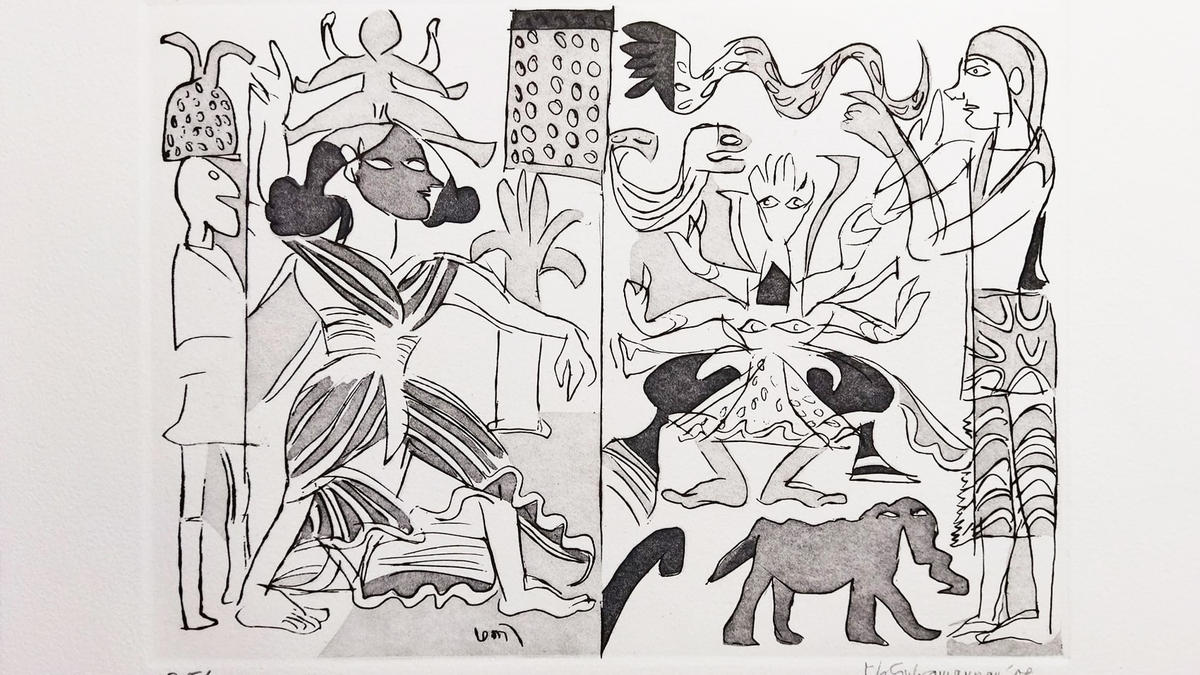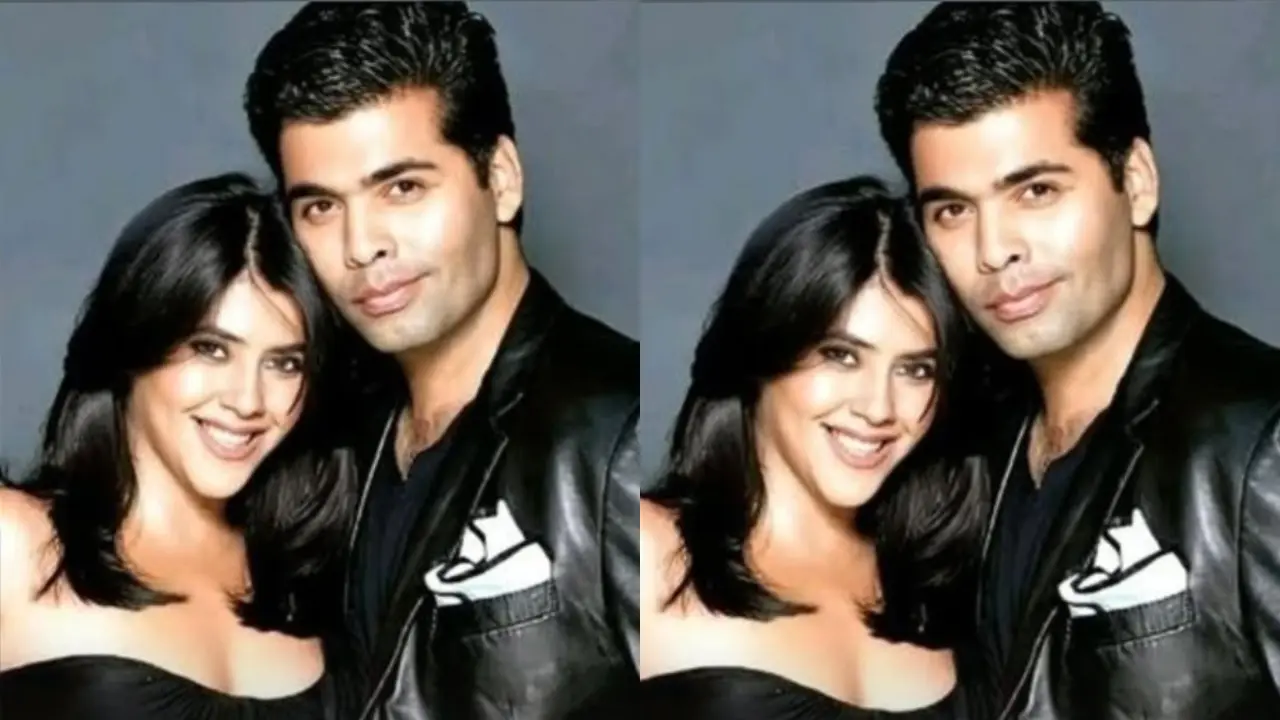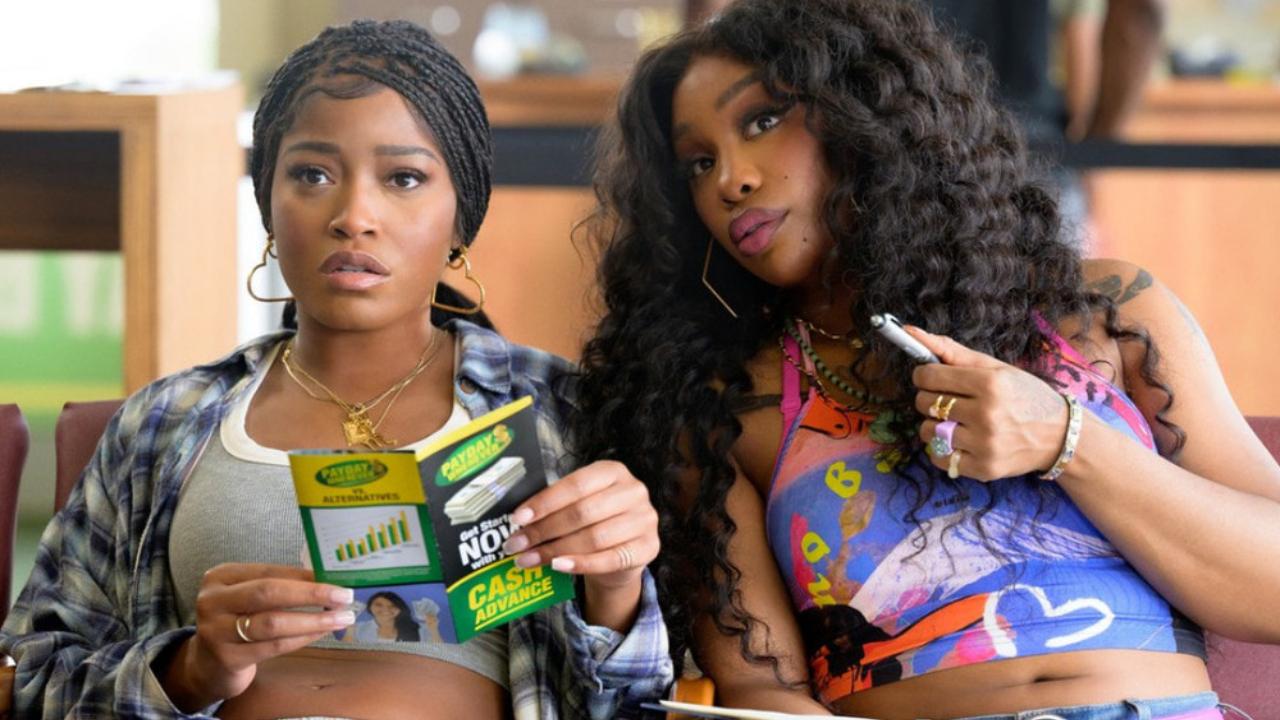For art enthusiasts and young artists alike, Srishti art gallery’s new exhibition Inked Legacies, Linked Geographies can work like an introductory course into the history and evolution of artists from Telangana and Andhra regions in printmaking, with mentorship from the masters in printmaking at the Faculty of Fine Arts, Maharaja Sayajirao University, Vadodara. How it all beganThe exhibition is a result of eight months of planning and execution, says gallery owner Lakshmi Nambiar. The idea emerged when artist Gayatri Dhanturi, who had worked with eminent artist Jyoti Bhatt in Vadodara, pitched the concept of an exhibition showcasing the works of artists who have been guided by Bhatt. Lakshmi expanded the idea to recognise and celebrate the influence of the teachers from the University on artists from Telangana and Andhra. Having hosted the late K G Subramanyan during his visit to Hyderabad for an exhibition a few years ago, and witnessed his interaction with veteran artists in the city who were his students, Lakshmi was aware of the exchange of ideas between the institute and the artists over generations.The process of shortlisting artists and the artworks began once curator Deeksha Nath came on board. “Initially we had not narrowed down on the medium,” says Lakshmi. The list of artists from the Telugu-speaking regions who have trained in Vadodara is a long one. Printmaking, which is not celebrated enough in Hyderabad’s art galleries, seemed an interesting focal point.
How it all beganThe exhibition is a result of eight months of planning and execution, says gallery owner Lakshmi Nambiar. The idea emerged when artist Gayatri Dhanturi, who had worked with eminent artist Jyoti Bhatt in Vadodara, pitched the concept of an exhibition showcasing the works of artists who have been guided by Bhatt. Lakshmi expanded the idea to recognise and celebrate the influence of the teachers from the University on artists from Telangana and Andhra. Having hosted the late K G Subramanyan during his visit to Hyderabad for an exhibition a few years ago, and witnessed his interaction with veteran artists in the city who were his students, Lakshmi was aware of the exchange of ideas between the institute and the artists over generations.The process of shortlisting artists and the artworks began once curator Deeksha Nath came on board. “Initially we had not narrowed down on the medium,” says Lakshmi. The list of artists from the Telugu-speaking regions who have trained in Vadodara is a long one. Printmaking, which is not celebrated enough in Hyderabad’s art galleries, seemed an interesting focal point.  Apni apni aag, an etching by Gulam Mohammed Sheikh
Apni apni aag, an etching by Gulam Mohammed Sheikh
| Photo Credit:
Special Arrangement
In her curatorial note, Deeksha Nath explains that The Faculty of Fine Arts, Maharaja Sayajirao University, founded in 1950, and its department of graphic arts was one of the first in India to be equipped with teachers for printmaking methods such as intaglio, lithography, relief printing, serigraphy and photography. Since the 1960s, there has been a steady influx of artists from Andhra and Telangana who have trained in Vadodara. The exhibition attempts to make viewers understand the artistic expressions that initially emerged from global art history movements and were eventually shaped by Indian traditional and contemporary practices.The four mastersThe exhibition, arranged clockwise from the gallery’s entrance, begins by celebrating eminent faculty members and moves to other artists. The lithographs, etchings and a digital print by KG Subramanyan from 1981 to 2012 show the changes in his artistic expression, even as he combined principles of European modernism and traditional Indian art forms. One of his signature styles is the use of contrasting dark and light imagery as he focuses on women, children and animals, often juxtaposing them as though in a reflective state. The feminine face is a recurring imagery in Jyoti Bhatt’s work, used as part of complex artworks. An etching titled Mayoori is a portrait of a woman juxtaposed with swastik-shaped symbols, birds, a dog, and a floral creeper. Some of his artworks at Srishti, from the 1960s to the present, show his myriad styles as he draws inspiration from rural art forms in Kolam Forms and the play of light and shade in his 1961 work titled Shadowed. The work precedes his foray into active photography in 1967; Bhatt is one of the founder members of the Center of Photography in Vadodara.
The feminine face is a recurring imagery in Jyoti Bhatt’s work, used as part of complex artworks. An etching titled Mayoori is a portrait of a woman juxtaposed with swastik-shaped symbols, birds, a dog, and a floral creeper. Some of his artworks at Srishti, from the 1960s to the present, show his myriad styles as he draws inspiration from rural art forms in Kolam Forms and the play of light and shade in his 1961 work titled Shadowed. The work precedes his foray into active photography in 1967; Bhatt is one of the founder members of the Center of Photography in Vadodara.
Self portrait, a 1971 etching by Jyoti Bhatt
| Photo Credit:
Special Arrangement
Gulam Mohammed Sheik’s etchings are his commentary on urban living spaces, presented with complex layers with an eye for minute detail. Rini Dhumal’s linocut and woodcut prints celebrate the feminine form, sometimes portraying them as goddesses — powerful and compassionate — alluding to Shakti.Signature styles of veteransHaving tipped its hat to the teachers of printmaking in Vadodara, the exhibition moves on to showcase the works of eminent artists. The collographs by P Gouri Shankar showcase his artistic style that veered towards abstraction even while the viewer could discern figurative connotations of human forms and landscapes. The etchings by Laxma Goud are examples of his exploration of eroticism in a rural context. Devraj Dakoji’s artworks from the 1960s to his 2019 work The Wheel of Life show his skill in exploring themes related to Nature and the interspersing of aquatic forms, horses and wheels representing the changing times.DLN Reddy’s woodcut on paperwork, Tree, exemplifies his ability to portray multiple forms in minute details, while Sudhakar Chippa’s etching Woman in Blue Saree explores the diminishing interaction of humans with Nature in urban dwellings.The next generation

Animals, etching by Bhaskar Chary
| Photo Credit:
Special Arrangement
One of Venkanna’s works is an uninhibited exploration of female sexuality, while Bhaskar Chary’s Tree is a representation of rampant urbanisation that takes over lung spaces. Gayatri Dhanturi’s works have hybrid imagery — a combination of butterflies and human anatomy — as metaphors for growth, decay and transformation.Soghra Khurasani’s large woodcuts in print are dominated by the colour red, symbolic of red blood cells. Her deep-hued artworks draw attention to violence against women and political turmoils. The work of Jagadeesh Tammineni, the youngest artist to be featured in this exhibition, is characterised by distinct imagery. The use of black and white in Under Control, featuring a tiger perched on a table, bathed by the brilliant light of the chandeliers, showcases the artist’s dexterity in printmaking.(Inked Legacies, Linked Geographies is on view at Srishti art gallery, Jubilee Hills, Hyderabad, till February 2025) Published – December 17, 2024 04:19 pm IST







Leave a Reply